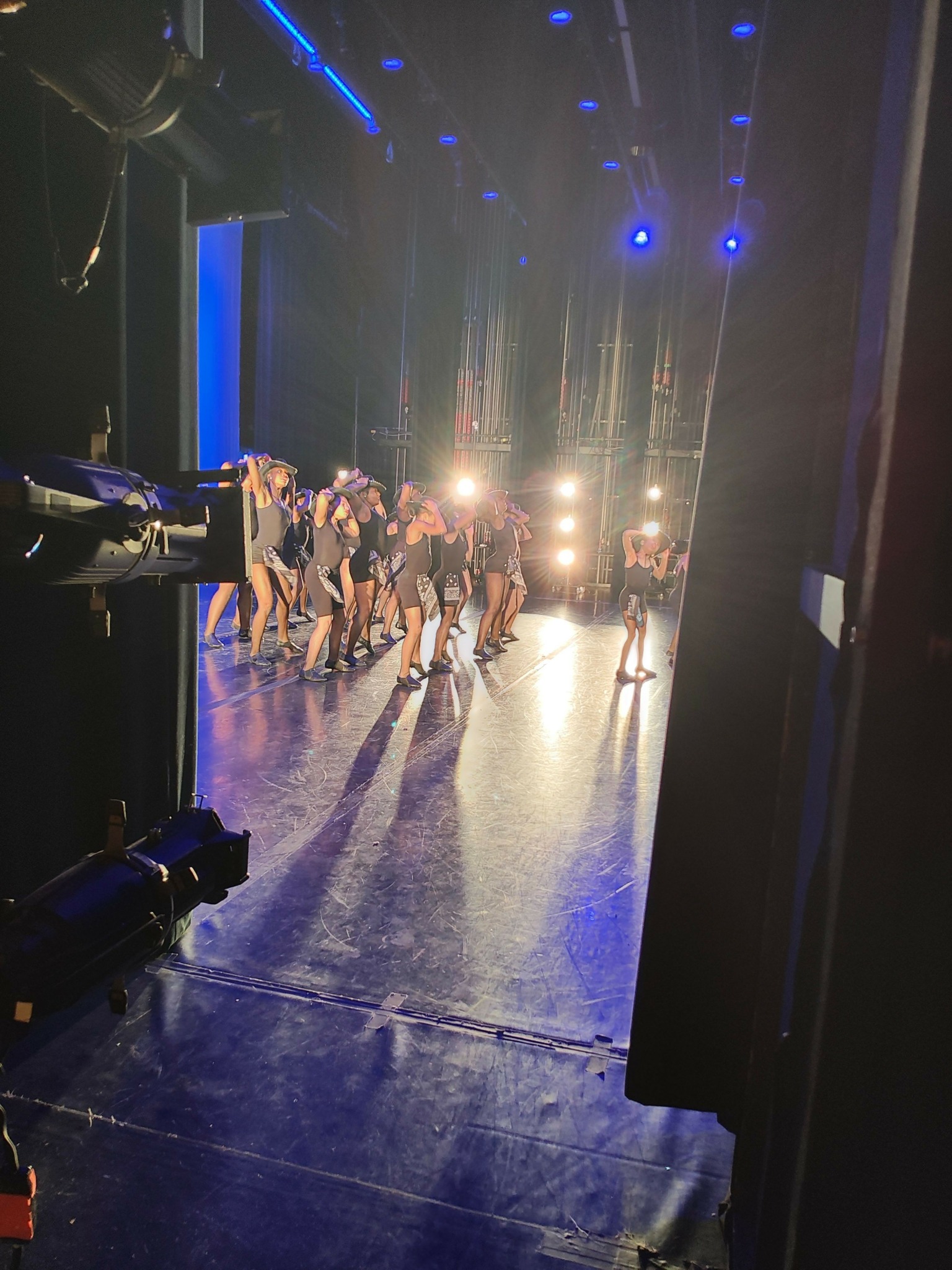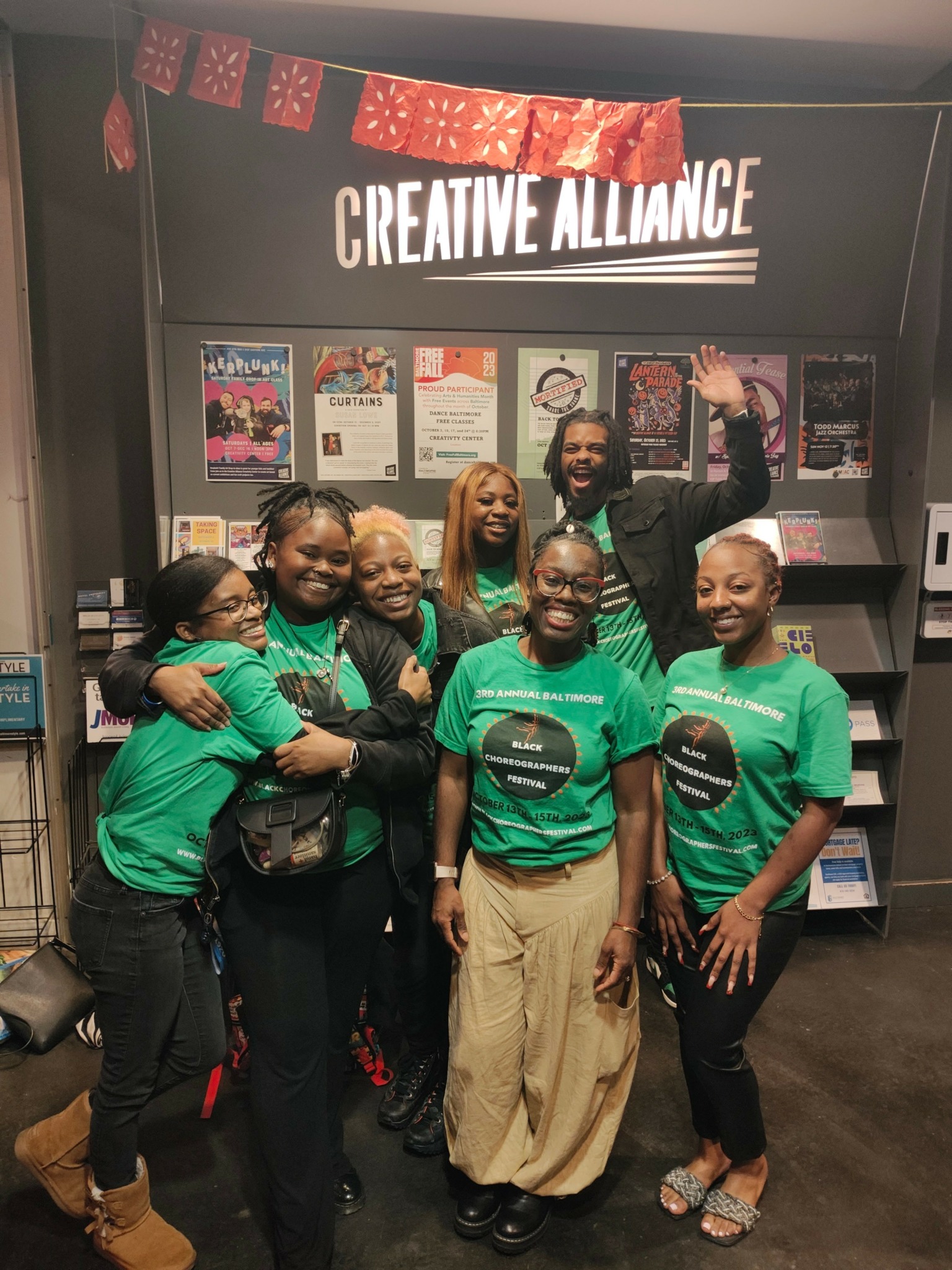We’re excited to introduce you to the always interesting and insightful Camille Weanquoi. We hope you’ll enjoy our conversation with Camille below.
Camille, thanks for joining us, excited to have you contributing your stories and insights. What’s been the most meaningful project you’ve worked on?
I’d say the most meaningful project we’ve worked on is actually the creation of our organization itself, Baltimore Black Dance Collective. It was born the before the pandemic but deeply curated during the racial justice uprisings that came shortly after. In that time, people were turning to the Arts for healing and community! That is when it became clear that Black dance artists in Baltimore have always been creating incredible work without the infrastructure, support, or visibility we deserved. We came together not just to survive, but to build something for ourselves: a space where our artistry, culture, and community could be centered and celebrated. Creating BBDC was an act of reclamation. It connected us, affirmed our value, and laid the foundation for everything we’ve done since. It started as just one show and morphed into our purpose in motion.

As always, we appreciate you sharing your insights and we’ve got a few more questions for you, but before we get to all of that can you take a minute to introduce yourself and give our readers some of your back background and context?
BBDC serves as both a platform and a connector. We provide:
1) Professional development and other opportunities for Black choreographers, dancers, and dance educators.
2) Community-centered programming like masterclasses, artist talks, and wellness workshops that are accessible and affirming.
3) Performance platforms, including our signature co-hosted event, the Baltimore Black Choreographers Festival, which uplifts emerging and established artists.
4) Consultation and advocacy for institutions that want to deepen their equity practices around Black dance and cultural programming.
We fill a critical gap in Baltimore’s arts landscape. Historically, Black dancers in the city haven’t had sustainable networks, financial backing, or centralized platforms to grow their careers and preserve our cultural legacy. We address that by creating space, literally and figuratively for Black dance to thrive. Whether it’s mentoring a new artist, advocating for arts policy change, or simply offering stipends to help someone keep going, we’re working to shift what’s possible.
We are led by Black dance artists for Black dance artists. That matters. Our lived experience informs everything we do, and our programming doesn’t treat culture as a trend or an add-on, it’s the center. We’re grounded in the values of community care, cultural preservation, and radical imagination. We don’t just want dancers to survive, we want them to be seen, valued, and sustained.
Without a doubt, I’m most proud of the way we’ve built this collective from the ground up. Starting with almost no resources, we’ve created something rooted in love, integrity, and deep cultural knowledge. Seeing artists find their voice on stage without the fear of how they would be able to financially showcase their work or hearing a student say they saw themselves reflected for the first time, that’s the impact we’re here for.
We want people to know that Baltimore Black Dance Collective is just getting started! We are reshaping what the arts landscape looks like in Baltimore and beyond by centering Black dance not as a niche, but as a foundation. We are collaborators, culture-bearers, and changemakers. Whether you’re a dancer, funder, educator, or community member, we want to work with those who believe in the power of dance to heal, transform, and liberate.

In your view, what can society to do to best support artists, creatives and a thriving creative ecosystem?
First and foremost, society must recognize that artists are essential, not optional. We are not a luxury or an afterthought; we are culture bearers, historians, visionaries, and healers. To truly support a thriving creative ecosystem, there must be intentional investment in artists’ livelihoods, not just their output.
This means funding needs to be more equitable, accessible, and sustained, not tied to trends or gatekeeping institutions. Black and Brown artists, in particular, need platforms and opportunities that are led by us and for us, with autonomy over how our stories are told.
We also need space, literally. Affordable rehearsal and performance venues, studio access, and live-work spaces are critical to our sustainability. And beyond that, we need policies that value the arts in education, housing, public health, and urban planning. Artists should be part of decision-making processes, not just invited in at the end.
Lastly, society can support creatives by SHOWING UP, buying tickets, sharing our work, engaging with our stories, and seeing us as workers with dignity, not just passion. A thriving creative ecosystem is one where artists don’t have to choose between survival and creativity. It’s one where our existence, our brilliance, and our labor are honored at every level.

Learning and unlearning are both critical parts of growth – can you share a story of a time when you had to unlearn a lesson?
One of the biggest lessons I had to unlearn is the idea that you can say you love dance, but only support the forms or artists that feel “pleasing” or familiar to you. That mindset is limiting, and honestly, it’s harmful.
For a long time, even within dance communities, I noticed a hierarchy of value: certain styles, aesthetics, or bodies were uplifted while others were overlooked or dismissed. As a Black dance artist deeply rooted in African Diasporic traditions, I’ve seen how often our work is labeled as “too raw,” “too political,” or “not refined enough,” even when it’s technically brilliant, emotionally rich, and culturally vital.
This backstory is personal to me. I remember early in my career feeling this internalized pressure to code-switch my choreography and “toning it down” for certain stages or companies so it can be more palatable. I’d watch incredibly talented peers be excluded from opportunities because their work didn’t fit the mold of what funders, institutions, or even audiences were conditioned to view as dance. But dance is not a monolith. It is protest. It is ritual. It is memory. It is joy. And it wears many shapes.
Unlearning that false standard freed me. Now, through the work we do at Baltimore Black Dance Collective, I advocate for the full spectrum of Black dance to be shared when possible, not just what’s “polished” for the mainstream. Because loving dance means loving its roots, its resistance, and its raw truths, even when they challenge you. Especially when they challenge you!
Contact Info:
- Website: https://www.baltimoreblackdance.com
- Instagram: @bmoreblackdancecollective
- Facebook: @Baltimore Black Dance Collective

Image Credits
On stage image of speaker provided by Justin Eastman.


